The best way to cheer up and improve your health without leaving your home is to arrange an aromatherapy session. To learn more about essential oils, their properties and proper use, see the table below.
What are essential oils extracted from?
Essential oils are oil-like liquids, insoluble in water, with a pronounced odor and strong pharmacological properties. They are obtained from various parts of plants: from leaves, stems, roots, seeds, wood. For this, freshly harvested raw materials are used.
There are several extraction methods, i.e. obtaining essential oils:
- distillation method with water. It is the oldest and most ineffective way;
- method of steam distillation. Most commonly used in modern industry;
- cold pressing method. It is used to obtain oils from citrus fruits;
- maceration method. The oil is extracted using fats. It is mainly used in the processing of floral raw materials.
The most widely used oils are citrus, mint and ylang-ylang.
Useful properties of essential oils
Essential oils affect various body systems.
Some of their most beneficial and effective properties are:
- antibacterial. Many oils act as powerful antiseptics, kill pathogenic bacteria and viruses;
- anti-inflammatory. Esters act on the foci of inflammation, and gently soothe them;
- wound healing. Oils contribute to the speedy regeneration of the epidermis; Scratches and other damage to the skin heal much faster.
- antispasmodic. Esters of orange, coriander and mint are a natural antispasmodic and effectively eliminate muscle spasms;
- sedative. After an aromatherapy session, a person feels relaxed and rested.
You can also highlight the diuretic and expectorant properties of oils.
Aircraft classification
Oils can be classified into the following groups:
- floral. Extracted from jasmine, rose, geranium, and some other plants. Soothes, relieve stress, relieve headaches;
- woody. Extracted from tea tree, pine, eucalyptus, juniper, cedar, and other trees. Useful in skin care, normalize heart rate;
- citrus. Extracted from grapefruit, lime, lemon, tangerine. Invigorate, strengthen the immune system;
- spicy. Extracted from ginger, cardamom, coriander. Relieve stress, warm, help get rid of colds;
- resinous. Extracted from incense, myrrh, fir. They have an antibacterial effect;
- exotic. Extracted from exotic verbena, patchouli, sandalwood. They restore the emotional background, improve sleep.

 Don't miss the most popular column article: Fashionable haircut for short hair. Photo, front and back views.
Don't miss the most popular column article: Fashionable haircut for short hair. Photo, front and back views.Table of beneficial properties of essential oils
Essential oils, properties and applications, the table below reveals their full benefits. Here you can see which oil combinations are the most successful and find out information about contraindications.
| Oil name | Healing and cosmetological properties | Where is used | Indications for use | Contraindications | What oil can be combined with |
| Anise | - neutralizes stale breath - improves kidney function - tones and moisturizes the skin | for the treatment of skin and hair, added to cosmetological masks | -chronic kidney disease -insomnia - gastrointestinal diseases | Gastritis, enterocolitis, ulcerative disease of the stomach or duodenum | Coriander, cumin, mint |
| Orange | -improves visual acuity -fights stomatitis - normalizes carbohydrate metabolism | to fight cellulite | -cellulite -premenstrual syndrome - aging skin | Sensitive skin, prone to allergic reactions, citrus intolerance | Sage, lemon, lime |
| Basil | -improves blood circulation - relieves muscle pain -stimulates hair growth | in cosmetology for hair treatment, in everyday life to scare away flying insects | migraine pains -digestion problems - vegetative-vascular dystonia | Epilepsy, hypertension, pregnancy | Grapefruit, eucalyptus, thyme |
| Bergamot | - strengthens blood vessels -has antibacterial properties -increases skin elasticity | cosmetology as part of facial products | -colds -high cholesterol -fast fatiguability | -pregnancy -dermatitis - ulcer during exacerbation | Basil, nutmeg, sage, thyme |
| Carnation | - fights against colds - improves the menstrual cycle -increases sex drive | in everyday life for scaring away moths, in cooking for cooking fish dishes | -stomatitis -asthma - irregular menstrual cycle | -first trimester of pregnancy -hypertension -sensitive skin | Eucalyptus, lemon, sage |
| Geranium | - improves the functioning of the lymphatic system -heals wounds - restores hormones | Used to treat ear diseases with folk remedies, in the manufacture of face and hair masks | - weakened immunity - periodontal disease - liver diseases | -children age up to 6 years -the period of breastfeeding - taking contraceptive pills | Orange, tangerine, basil |
| Grapefruit | - improves digestion - normalizes fat metabolism -fights cellulite | It is used in the production of anti-cellulite products, massage oils | -overwork -obesity - tendency to edema | - citrus intolerance -atopic dermatitis | Lime, coriander, lemon |
| Ylang ylang | - removes emotional overexcitement - acts as an aphrodisiac - smoothes the skin | Added to skin and hair care products, massage oils | -dermatitis -problem oily skin -insomnia | -low blood pressure -pregnancy - lactation period | Lemon, rose, jasmine |
| Lavender | - strengthens the heart muscle - normalizes sleep -cleans pores | Used for healing burns, preparing cosmetic baths | -insomnia acne, acne - burns 1 and 2 degrees | -Iron-deficiency anemia -low pressure -period of rehabilitation after surgery | Tea tree oil, geranium, clove |
| Lemon | - cures colds and flu - relieves migraine pains - stimulates the liver | Used to care for oily skin. Used for medical purposes for inhalation and other procedures | -rheumatism -chronic fatigue bad breath | - citrus intolerance -oncological diseases | Thyme, rosemary, ginger |
| Juniper | -increases the production of gastric juice - has anti-rheumatic action -heals wounds | Used to treat cardiovascular disease, It is used in cosmetology for body care | -atherosclerosis -diabetes -gout | -infectious kidney disease -hypertension | Basil, mint, incense |
| Mint | - relieves toothache and headache - clears the airways -reduces fever | It is used in medicine for therapeutic inhalations, in cosmetology for the face and hair, in everyday life against parasites | - itching from insect bites -bronchitis -inflammation of the gums | -Children under 6 years old - allergy to peppermint -oncological tumors | Orange, anise, benzoin |
| Neroli | - strengthens hair follicles -fights cellulite -makes stretch marks on the skin less visible | Used for aromatization of premises, medical inhalations, added to cosmetics | -hair loss -menstrual pain -eczema | -3 trimester of pregnancy -Children under 1 year old -epilepsy | Bergamot, fennel, nutmeg |
| Sandalwood | -reduces pressure - relieves itching - relieves symptoms of cystitis | Used for massage and body care | -hair loss -acne -neurosis | - kidney disease -pregnancy -Children under 1 year old | Mandarin, geranium, neroli |
| Eucalyptus | -fights parasites - soothes the skin -helps concentrate attention | It is used for medical inhalations, used in cosmetology | -herpes furuculosis -bronchitis | - taking homeopathic medicines -whooping cough | Lime, lavender, cedar |
| Rosemary | - eliminates acne - relieves headache - relieves nausea | Added to cosmetics, used for massage, used in cooking | -acne -increased hair oiliness -dark spots | -hypertension -epilepsy | Nutmeg, black pepper, cinnamon |
| Tea tree | - relieves irritation on the skin - has a bactericidal effect - eliminates warts | Used for inhalation, is part of massage oils and facial care products | - skin rashes -dandruff -chronic rhinitis | -Children under 6 years old -oncological diseases - lactation period | Coriander, cypress, patchouli |
| Patchouli | - promotes the restoration of skin cells -reduces the secretion of the sebaceous glands - strengthens nails | Used in cosmetology and in the manufacture of homemade masks | - aging skin -hair loss -overwork | -asthma - child's age up to 1.5 years -gastritis | Tea tree oil, bergamot, camphor |
| Fir | -Improves metabolism - relieves joint pain -heals wounds | It is used for medical inhalations, making hair care products | -pneumonia -bronchitis -cough | -individual oil intolerance -pregnancy and lactation | Grapefruit, Ylang Ylang, Jasmine |
| Cedar | -fights gum disease - strengthens the heart -vascular system - relieves the symptoms of oteochondrosis | Used in cosmetology to combat the manifestations of skin diseases | -burns -rheumatism -acne | -Children under 12 years old - kidney infection - a tendency to emotional overexcitation | Orange, pine, ginger |
| Pine | - relieves dizziness - eliminates nausea - has a calming effect on the skin | Used for therapeutic inhalations and skin care for the face and body | -cough -cystitis -urethritis | - stomach ulcer -duodenal ulcer - uterine tone during pregnancy | Cedar, tangerine, chamomile |
| rose flower | - smoothes expression lines - has a diuretic effect - destroys bacteria | Added to face and body creams, used in homemade masks | -chronic overwork -insomnia -dry skin | -pregnancy -dermatological diseases -burns on the skin | Lemon, juniper, myrrh |
| Jasmine | -removes hoarseness -fights cough - promotes hematopoiesis | It is used in cosmetology for facial skin care procedures | - eye diseases -hormonal imbalance -panic attacks | -gastritis - kidney disease -1 trimester of pregnancy | Lemongras, sandalwood, neroli |
| Thyme | -is a natural antioxidant -fights flatulence -removes nail fungus | Used to treat acne, get rid of dandruff, fight hair loss | - fungal infections of nails -cold -stomach upset | -cholecystitis -emphysema -duodenal ulcer | Tea tree oil, geranium, nutmeg |
| Cinnamon | - acts as an antispasmodic - destroys viruses and bacteria -stimulates hair growth | It is used for the manufacture of some medicines, it is included in the composition of beauty products | - early stage of cellulite -inflammation of the gums - insect bites | -hypertension -oncological diseases -pregnancy | Eucalyptus, mint, cloves |
| Sagebrush | -has an antiparasitic effect - relieves swelling - tightens pores | It is used in aromatherapy, cosmetology, used in everyday life as a means of fighting insects | -The presence of warts and papillomas, - chronic stress, - diseases of the upper respiratory tract | -epilepsy -asthma -period of pregnancy | Hyacinth, jasmine, tea tree oil |
| Mandarin | - removes toxins and toxins - eliminates constipation - tones the skin | It is included in the composition of cosmetics for body care, added to home masks | acne and age spots - muscle pain after exertion -insomnia | - allergic reactions to citrus fruits | Coriander, marjoram, jasmine |
| Vanilla | - promotes the absorption of carbohydrates - eliminates nervous tension - nourishes the skin | -used for skin and hair care -used in cooking for flavoring confectionery | -seborrhea -diabetes -disorders of the digestive tract | -pregnancy -individual intolerance to vanilla | Benzoin, bergamot, vetiver |
| Cypress | - eliminates bleeding gums - copes with wet cough - normalizes pressure | -Added to oily skin and hair care products -in everyday life helps to scare away insects | -inflammatory processes in the oral cavity - menstrual irregularities -increased hair oiliness | -psoriasis -the tendency to form blood clots -mastopathy | Eucalyptus, fennel, oregano |
| Sage | -heals wounds - has an expectorant effect - smoothes wrinkles | -used in the production of shampoos and other hair products -for inhalations for colds | - respiratory tract diseases -atherosclerosis -gastritis | -hypertension sleep disorders -period of pregnancy and lactation | Lemon, cypress, neroli |
| Fennel | - eliminates swelling -stimulates digestion - removes from the body toxins | -used for cosmetic body treatments | - diseases of the genitourinary system -flatulence -food poisoning | -hypertension -epilepsy -Children under 1 year old | Basil, anise, benzoin |
Essential oils, properties and uses, the table given here helps to use them correctly.
All of these oils are used in the aromatherapy and aroma industry in the manufacture of perfumery products.

 Don't miss the most popular column article: Fashionable haircut for medium hair. Photo, front and back views.
Don't miss the most popular column article: Fashionable haircut for medium hair. Photo, front and back views.General guidelines for using essential oils
Here are some tips to help you use your oils more effectively:
- you need to start using new oil with a minimum dosage. This is especially important for people prone to allergic reactions;
- do not allow the substance to get into the eyes or on mucous membranes;
- the maximum time for taking an aromatic bath should be 30-40 minutes;
- for pregnant women, children and the elderly, the dosage should be half the average;
- do not get carried away with invigorating and refreshing aromas before bed.
Drinking plenty of clean water is recommended on days when aromatherapy is used.
Baths and baths with essential oils
An aromatic bath is a great way to relax. How to cook it correctly?
Here are a couple of ways:
- take a hot bath. In 2 tbsp. l. olive oil dissolve 5 drops of orange oil. Pour the mixture into water.Premixing the oils is essential to prevent skin burns;
- take a hot bath, dissolve 100 grams of coarse sea salt in it. Add a mixture of 20 ml almond and 5 drops of ylang-ylang oil.
Essential oil baths promote relaxation and provide a soothing effect
How to properly use essential oils in a sauna and steam bath:
- do not apply them directly to heating elements;
- a heat-resistant vessel with water must be placed next to the heat source, where a few drops of the substance will be added. They do not need to be dissolved in the base oil unless you plan to apply the mixture to the skin.
Massages
To properly massage with essential oil, you need to dissolve a few drops of ether in a base oil - that is, any familiar and suitable for massage.
Features of using oils for massage:
- for a relaxing massage, use a mixture of mint, lavender and sage;
- if the purpose of the session is to relieve pain, cloves, jasmine or juniper will do;
- for anti-cellulite massages, citrus, neroli and geranium oils are used.
It is forbidden to smoke and drink alcohol before the massage.
Inhalation
Essential oils, properties and uses, the table describes as suitable for therapeutic inhalation. Inhalation with essential oils is used as a means for the prevention and treatment of respiratory diseases.
The process itself consists in inhaling aromatic medicinal substances. For hot inhalation, inhale hot steam.
The easiest way to do this is to prepare a bowl of hot water, to which medicinal teas and essential oils will be added.
For cold inhalations, water is used with a temperature of no higher than 40 C. The procedures can also be carried out using a special device - a nebulizer.
With the help of such procedures with essential oils, you can reduce the swelling of the mucous membrane, thin phlegm, relieve bronchospasm.
Essential oils for hair care
Essential oils, properties and uses - the table suggests that they are very effective in hair care.
Here are some recipes:
- mix the yolk of a chicken egg with 1 tsp. liquid honey. Take 2 tbsp. l. olive oil, combine with 3 drops of rosemary and fir oil. Mix everything, apply to the roots of damp hair. Wash off after 20 minutes. The mask helps to increase hair density and get rid of dandruff;
- Add 5 drops of tea tree oil to 1 tbsp. l. any vegetable oil. Pour in 1 tbsp. l. aloe juice, apply to the roots and scalp. Wash off after 15-20 minutes. The mask accelerates hair growth.
Also, a couple of drops of any oil can be added to the finished conditioner balm. This will add shine and ease the combing of your hair.
Skin care
When treating your face with essential oils, it is important to correctly identify your skin type:
- mask for oily skin... 1 tbsp. l. dilute dry blue clay with water to the consistency of sour cream, add 3 drops of any citrus oil, diluted in 1 tbsp. l. base cosmetic oil. Soak for 15 minutes, rinse with warm water. The mask tightens enlarged pores and mattifies the skin;
- mask for dry skin. Combine egg yolk, 1 tsp. liquid honey, 1 tbsp. l. olive oil and 2 drops of tea tree oil. Wash off after 10 minutes. The product cleanses the skin well and relieves inflammation.
If, after applying the mask, red spots and itching appear on the skin, then the oil is not suitable. Stop using it.
Essential oils during pregnancy
Pregnancy is a contraindication for using most essential oils. This is due to the fact that a woman's sensitivity to odors is exacerbated. Also, oils can provoke uterine tone, which, depending on the duration of pregnancy, threatens with miscarriage or premature birth.
You can safely use orange, lemon, eucalyptus, mint and lavender oils. They provide calmness, moisturize the skin - which is important for preventing stretch marks, and energize.If a pregnant woman feels unwell during aromatherapy, Siens should be stopped immediately.
Essential oils for children
Essential oils, properties and uses - the table states that some of them are not recommended for children. This is because babies are much more sensitive to odors. It is not recommended to use oils for the first two months of a child's life - neither for massage, nor for aromatizing a child's room.
Later, you can use the following tools:
- lavender oil will help the baby fall asleep and relax his nervous system. Can be used from 2 months;
- in the same period, it is easy to add chamomile oil. It relieves abdominal pain;
- after one year, fennel, bergamot and sandalwood oils are allowed.
When adding oils to bathing water, remember that the dosage should be minimal, and the oil is pre-diluted in an emulsifier - for example, in ordinary vegetable oil.
Use of essential oils in aroma stones and lamps
Aroma stones and aroma lamps are used to scent rooms. The lamp is a ceramic bowl heated from below by a candle flame. For the manufacture of aroma stones, rocks are used that are capable of absorbing odors well. They can be made from gypsum, clay, or salt dough.
Which scents are best for home use:
- ylang-ylang, lavender, incense, sandalwood are suitable for the bedroom. These are relaxing scents;
- for the office, the smells of lemon, grapefruit, orange, rose, ginger will be appropriate. They invigorate and energize;
- the living room can be scented with patchouli, rosemary, neroli oils. These scents create a cozy atmosphere.
Aromas can be mixed with each other, referring to the table of their compatibility, and create unique compositions.

 Don't miss the most popular column article: Fashionable bangs of the new season for medium, short, long hair. A photo.
Don't miss the most popular column article: Fashionable bangs of the new season for medium, short, long hair. A photo.Cosmetics with essential oils
Essential oils, due to their properties described in the table, are widely used by the cosmetic industry.
Here are the means in which you can see them:
- Peppermint oil is often found in protective lip balms
- tea tree oil is included in ointments and creams aimed at combating dermatological diseases. It is also found in cleansing gels;
- jojoba oil is part of balms and masks for dry damaged hair;
- in the compositions of daily creams, you can see chamomile, rosemary, ylang-ylang, tea tree oil.
Moisturizing and anti-inflammatory oils are added to face care products, and nourishing oils for hair and body. Usually their concentration is rather low, but this is enough to see the effect.
Can essential oils be taken internally?
The opinion on this matter is twofold. According to the recommendations of the WHO - World Health Organization - essential oils are not recommended for ingestion. It is believed that they act several times faster with the help of inhalation, and it is most advisable to use them either in this way or only externally.
This is due to the high concentration of active ingredients in the oil. They can irritate the lining of the esophagus. Some oils are toxic and can negatively affect kidney and liver function. At the same time, some experts in the field of aromatherapy consider the use of oils by mouth acceptable.
In order not to harm the body, the following rules must be observed:
- use only 100% natural substances;
- never take pure oil. It must be diluted in an emulsifier, which is 1 tbsp. l. vegetable oil or heavy cream;
- do not exceed the maximum allowable dosage and do not take the oil for more than 7 days in a row.
If, after taking the oil inside, nausea, vomiting, stomach pains appear, and the general state of health has deteriorated sharply, it is necessary to urgently seek medical help.
How to choose a quality essential oil
Here are some guidelines to help you choose a truly quality product:
- you need to pay attention to the price. Since to create natural oil, you need to process more than a dozen kilograms of raw materials, a quality product will not be cheap. It is also not normal for all the oils on offer to have the same price;
- the bottle must be equipped with a dropper or pipette, and made of dark glass;
- the label must have the botanical name of the oil indicated in Latin;
- if the product consists of an essential oil and its base, the percentage of both components must be indicated on the label.
In addition, it is worth choosing only trusted manufacturers. It will not be superfluous to attend to the search for product reviews in advance.
How to store the product
There are certain guidelines for proper storage of essential oils:
- vials should be kept in a dark place protected from sunlight. Since most vials have plastic caps, they must be stored strictly upright so that the oil does not come into contact with the plastic;
- after each use, it is important to tighten the lid tightly;
- citrus and pine oils should be kept in the refrigerator; everyone else will feel great at room temperature.
There is another way to find out that the essential oils described in the table above have not lost their useful properties, and they can be used without fear - you need to focus on the smell. If the oil has acquired an unusual, sour, repulsive smell, most likely the product has deteriorated.
Article design: Olga Pankevich
Video about the properties and uses of essential oils
Essential oils most needed in a home medicine cabinet:
How to use essential oils in the bath:
https://www.youtube.com/watch?v=aM_lhFwuJbU

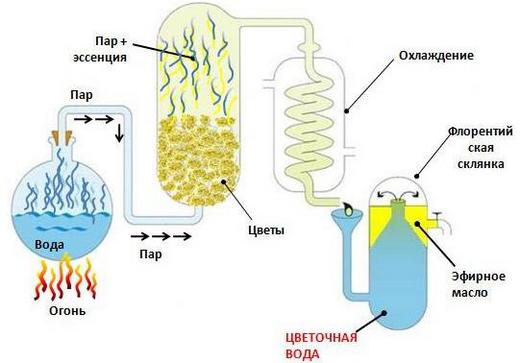
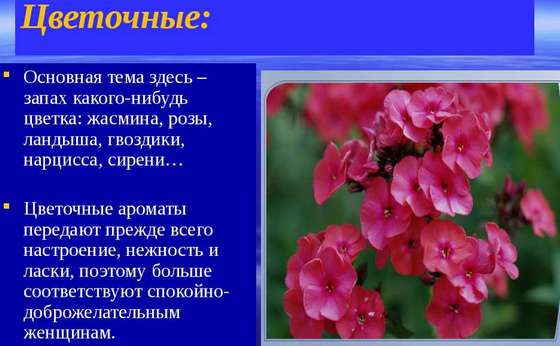
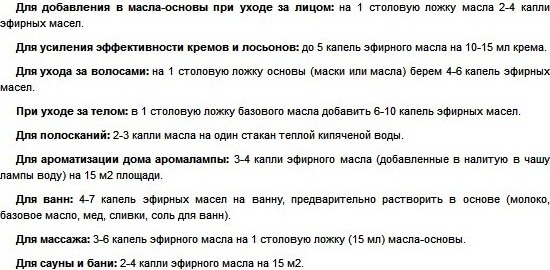
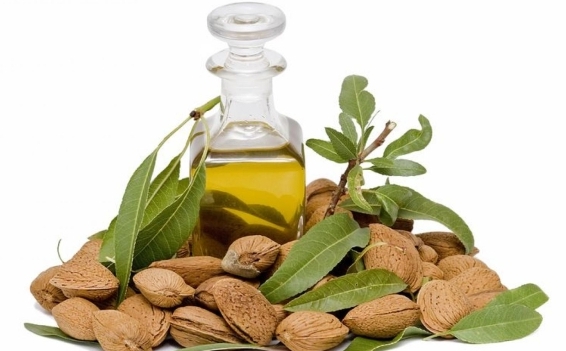
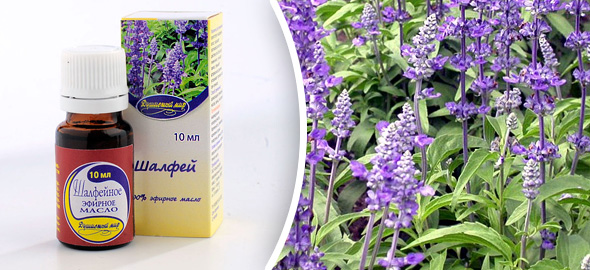
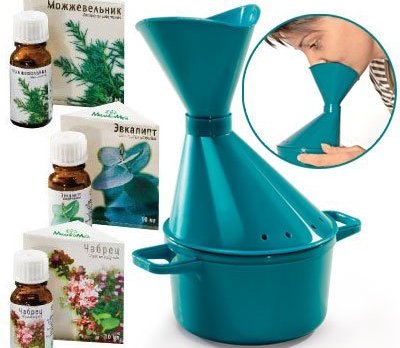
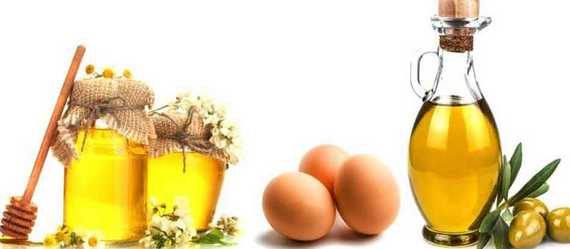
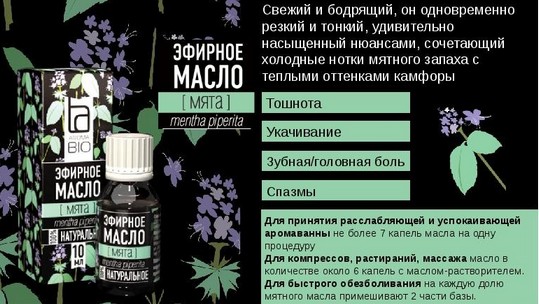
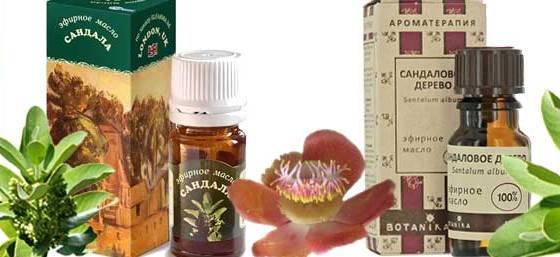
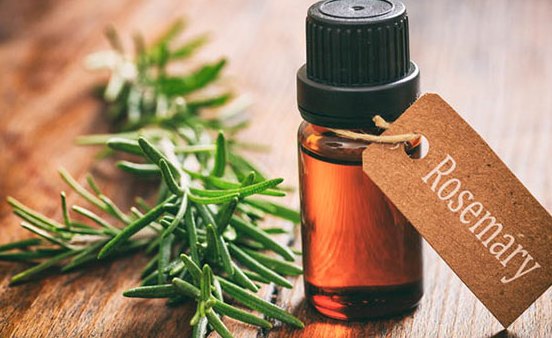
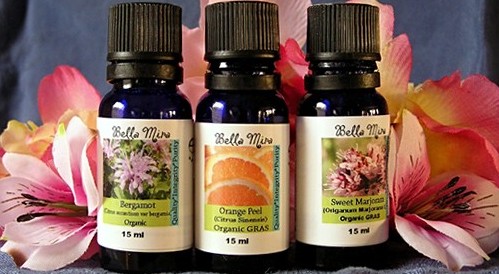
I always have several bottles of essential oils in stock: rosemary, burdock, pink, mint and others. I add to baths, use for massage and for preparing face and hair masks.